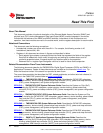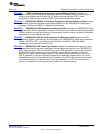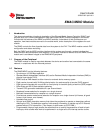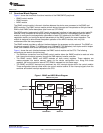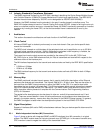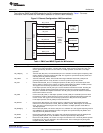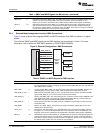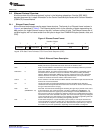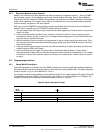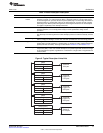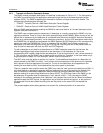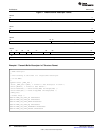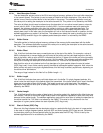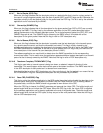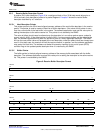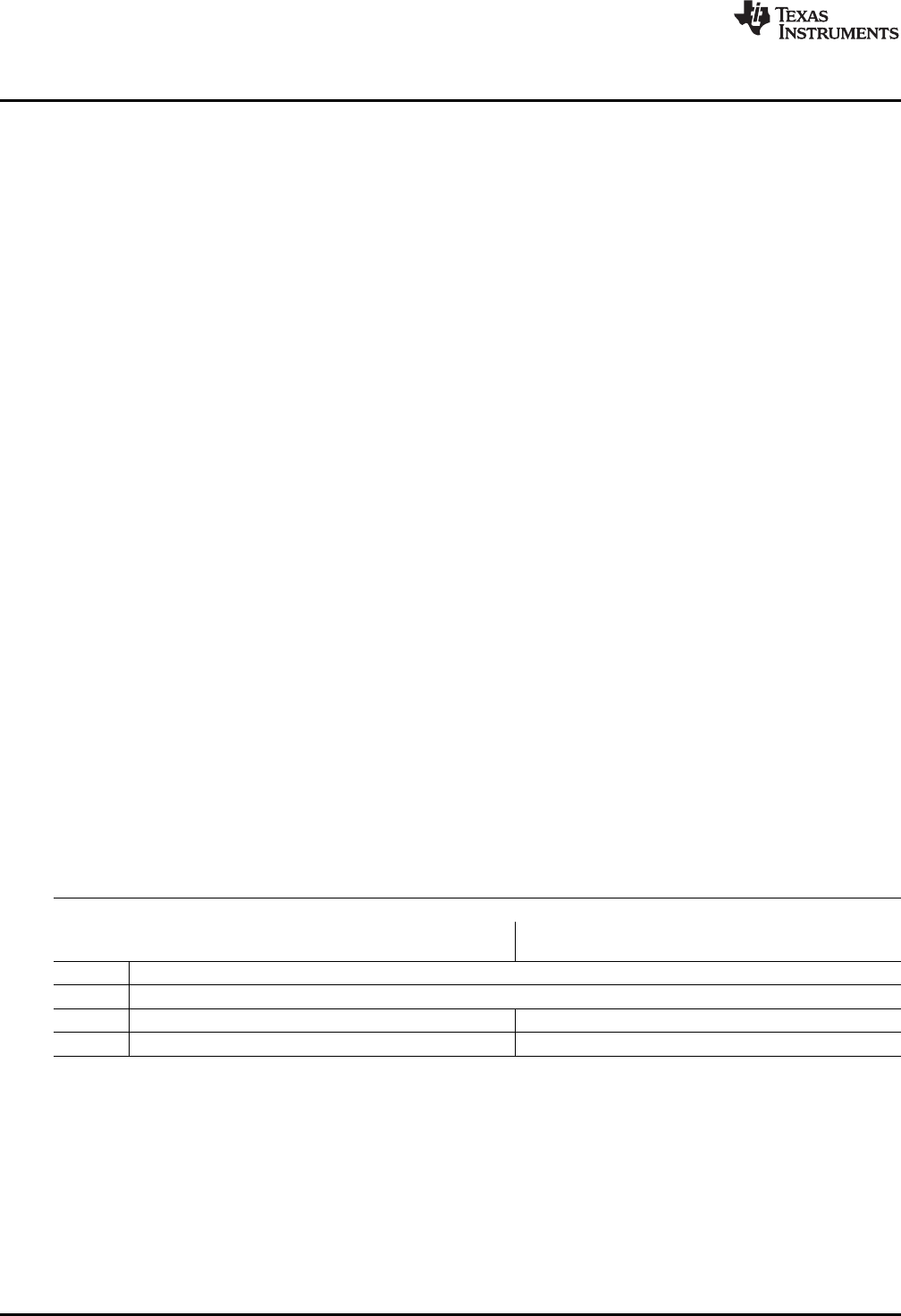
Architecture
www.ti.com
2.4.2 Ethernet’s Multiple Access Protocol
Nodes in an Ethernet Local Area Network are interconnected by a broadcast channel -- when an EMAC
port transmits a frame, all the adapters on the local network receive the frame. Carrier Sense Multiple
Access with Collision Detection (CSMA/CD) algorithms are used when the EMAC operates in half-duplex
mode. When operating in full-duplex mode, there is no contention for use of a shared medium because
there are exactly two ports on the local network.
Each port runs the CSMA/CD protocol without explicit coordination with the other ports on the Ethernet
network. Within a specific port, the CSMA/CD protocol works as follows:
1. The port obtains data from upper layer protocols at its node, prepares an Ethernet frame, and puts the
frame in a buffer.
2. If the port senses that the medium is idle, it starts to transmit the frame. If the port senses that the
transmission medium is busy, it waits until it no longer senses energy (plus an Inter-Packet Gap time)
and then starts to transmit the frame.
3. While transmitting, the port monitors for the presence of signal energy coming from other ports. If the
port transmits the entire frame without detecting signal energy from other Ethernet devices, the port is
done with the frame.
4. If the port detects signal energy from other ports while transmitting, it stops transmitting its frame and
instead transmits a 48-bit jam signal.
5. After transmitting the jam signal, the port enters an exponential backoff phase. If a data frame
encounters back-to-back collisions, the port chooses a random value that is dependent on the number
of collisions. The port then waits an amount of time that is a multiple of this random value and returns
to step 2.
2.5 Programming Interface
2.5.1 Packet Buffer Descriptors
The buffer descriptor is a central part of the EMAC module and is how the application software describes
Ethernet packets to be sent and empty buffers to be filled with incoming packet data. The basic descriptor
format is shown in Figure 5 and described in Table 4.
For example, consider three packets to be transmitted: Packet A is a single fragment (60 bytes), Packet B
is fragmented over three buffers (1514 bytes total), and Packet C is a single fragment (1514 bytes). The
linked list of descriptors to describe these three packets is shown in Figure 6.
Figure 5. Basic Descriptor Format
Bit Fields
Word
Offset 31 16 15 0
0 Next Descriptor Pointer
1 Buffer Pointer
2 Buffer Offset Buffer Length
3 Flags Packet Length
18
EMAC/MDIO Module SPRUFL5B–April 2011
Submit Documentation Feedback
© 2011, Texas Instruments Incorporated



